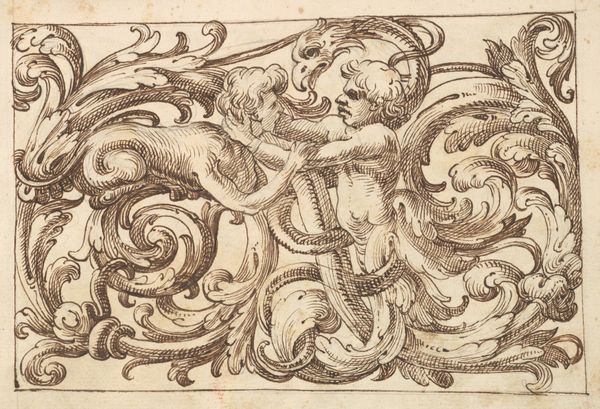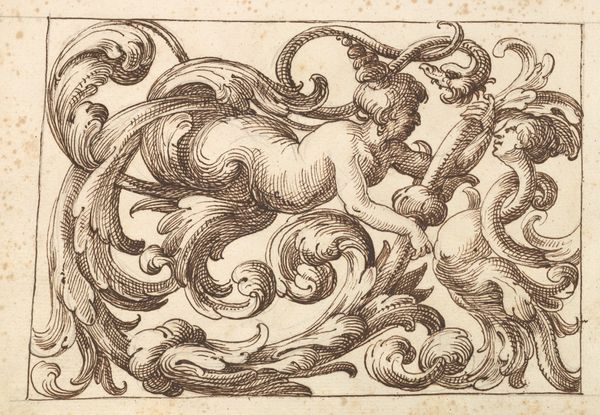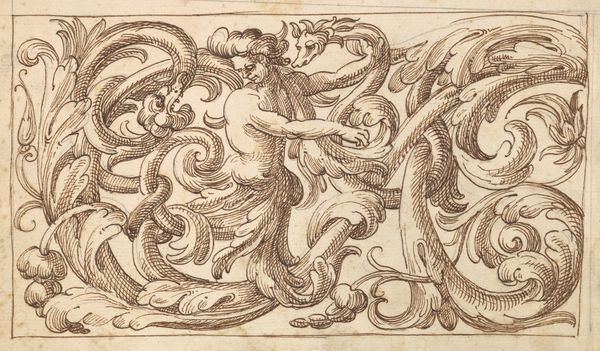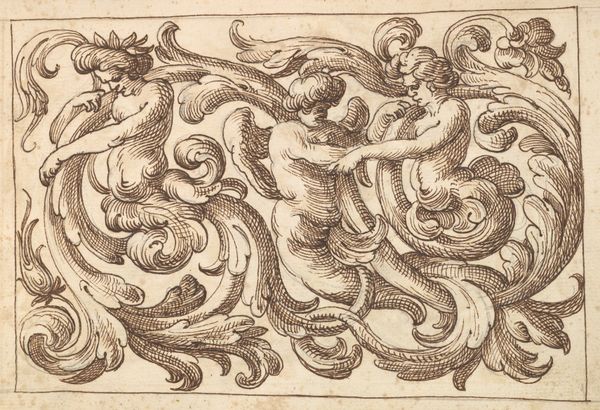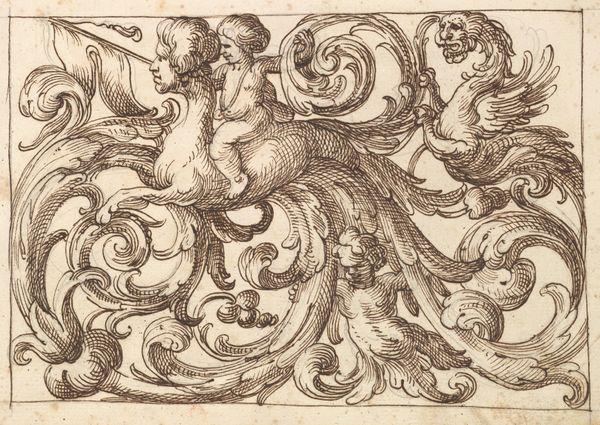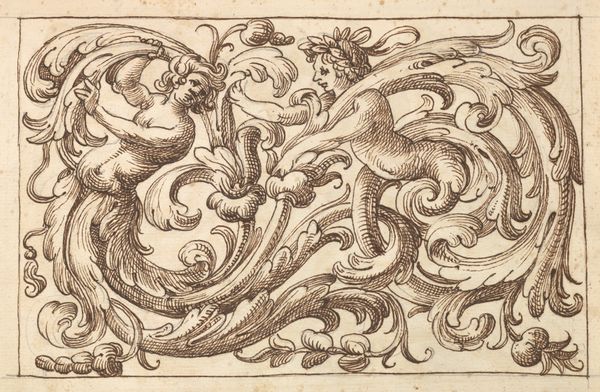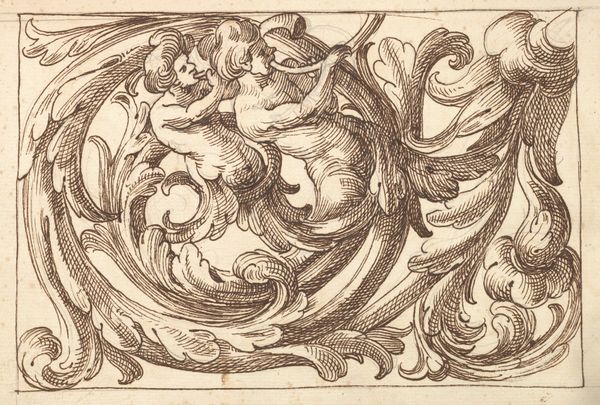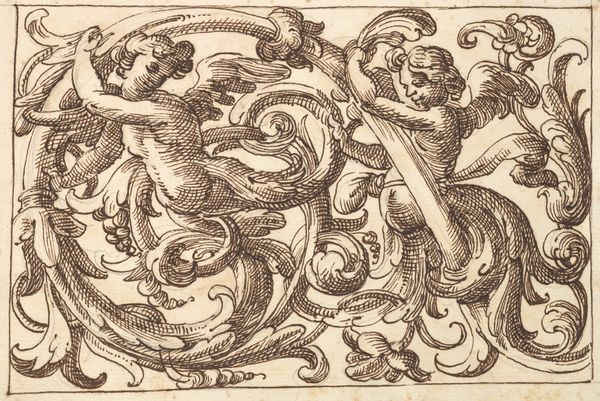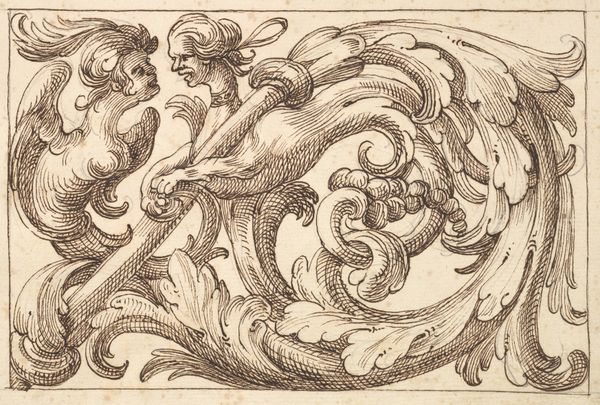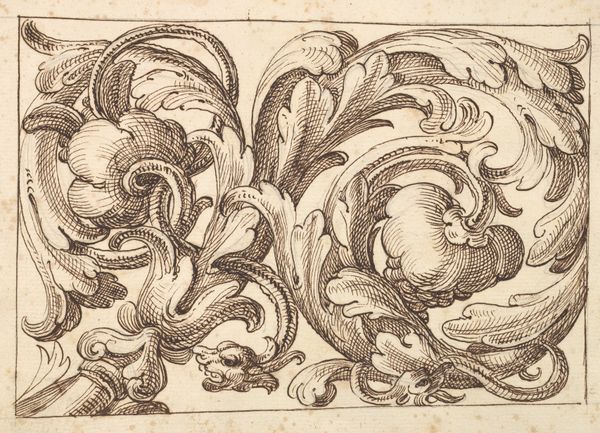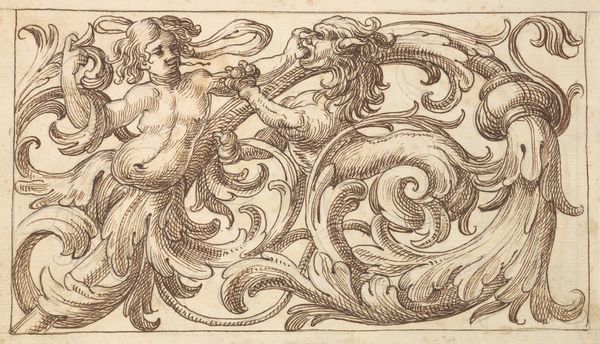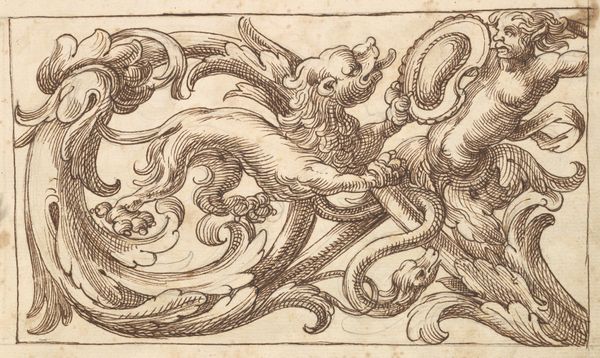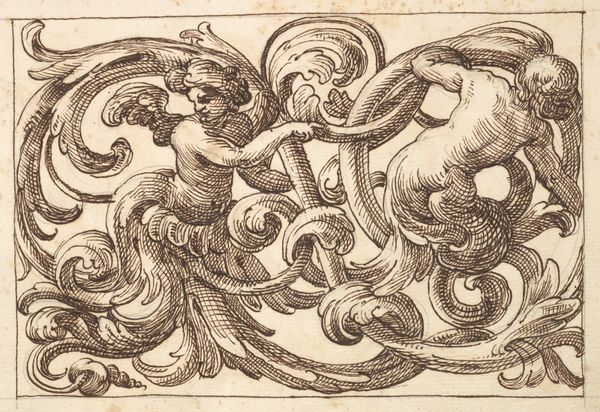
Horizontal Panel Design with a Female Figure and Two Fantastical Creatures Interspersed between Acanthus Rinceaux 1600 - 1650
0:00
0:00
drawing, print, ink, pen
#
drawing
#
baroque
#
pen drawing
# print
#
figuration
#
ink
#
pen
#
genre-painting
Dimensions: Sheet: 7 3/16 x 10 1/4 in. (18.3 x 26.1 cm)
Copyright: Public Domain
Curator: Allow me to introduce "Horizontal Panel Design with a Female Figure and Two Fantastical Creatures Interspersed between Acanthus Rinceaux," created anonymously sometime between 1600 and 1650. It's a pen and ink drawing, quite typical of the Baroque era, now residing at the Metropolitan Museum of Art. Editor: It strikes me as incredibly intricate. The linework is so dense, it almost feels sculptural, especially with the heavy cross-hatching used to give depth. A feast for the eyes. Curator: Exactly. The density of the hatching and the sheer volume of detail exemplifies Baroque sensibilities, that abhorrence of the void so prevalent then. Consider the acanthus rinceaux, how they frame the figure, their function isn't just decorative. Editor: Right. They simultaneously create dynamism and order. How would an artist's drawing of a horizontal panel contribute to shaping visual culture in society during this period? Curator: That’s a key question. Panel designs like these functioned as prototypes for larger works – frescoes, tapestries, even sculptural reliefs. They served as disseminators of style, impacting everything from interior decor to public art. The baroque loved to repeat motifs... Editor: So it’s essentially mass media before the printing press became widespread, albeit exclusive mass media for those who could afford such luxurious decor? These swirling acanthus leaves and hybrid creatures remind me a little of illuminated manuscripts, carrying the sacred into secular spaces. Curator: An interesting observation. The monstrous faces nestled amongst the acanthus and framing the winged women are striking, aren't they? It is, at least partly, about a transfer of status. These panels provided templates for projecting power through design, accessible to those wealthy enough to incorporate such details into their surroundings. Editor: Ultimately, analyzing how the composition facilitates the proliferation of certain social values through a specific style is so interesting to unpack. Curator: It does reveal a great deal about the period, how artistic style became another tool for shaping perception and asserting influence in Early Modern Europe. I’ll look at Baroque ornament differently from now on.
Comments
No comments
Be the first to comment and join the conversation on the ultimate creative platform.
